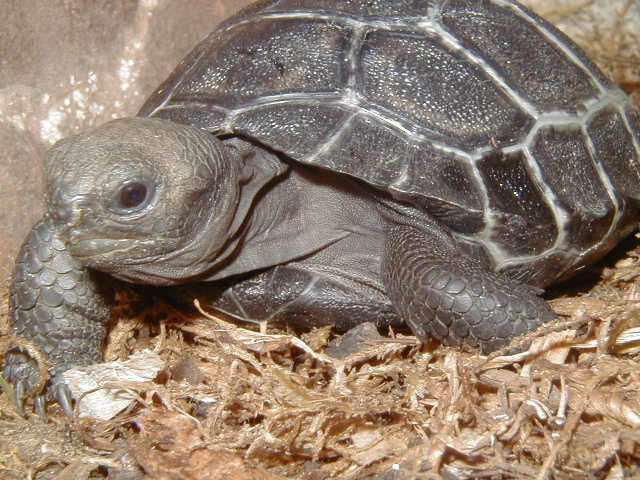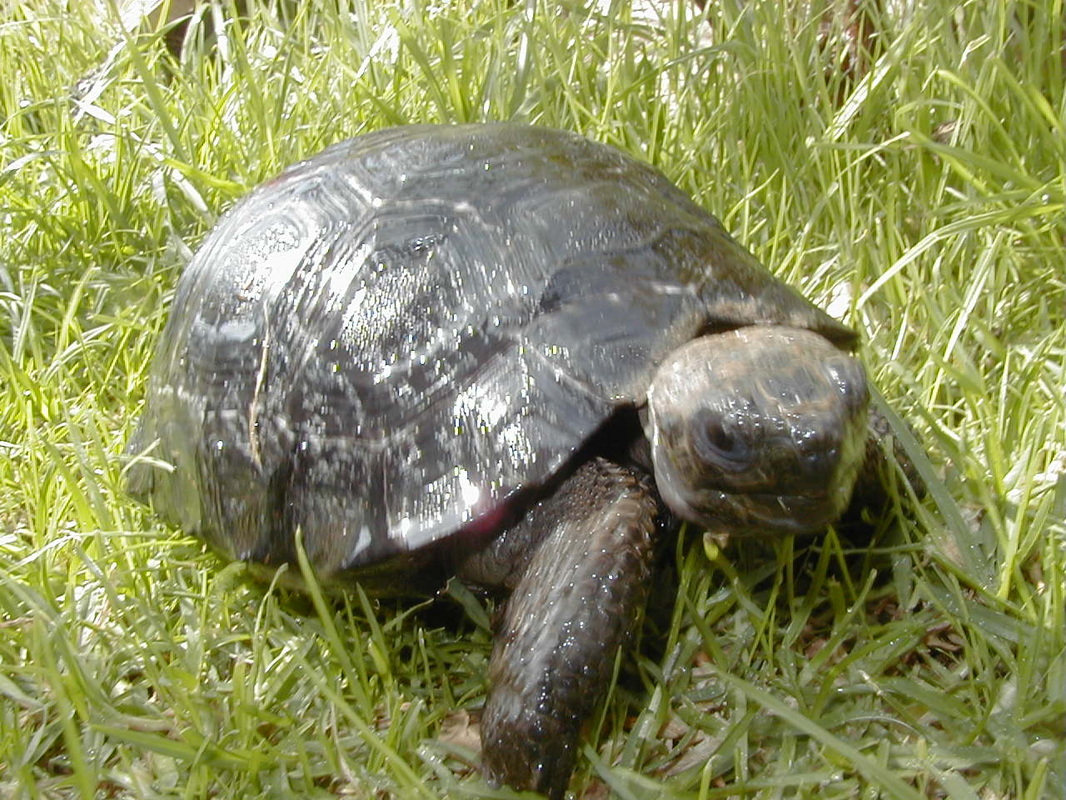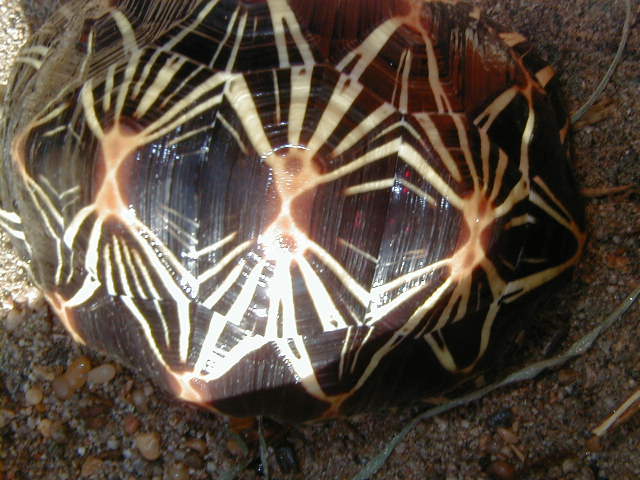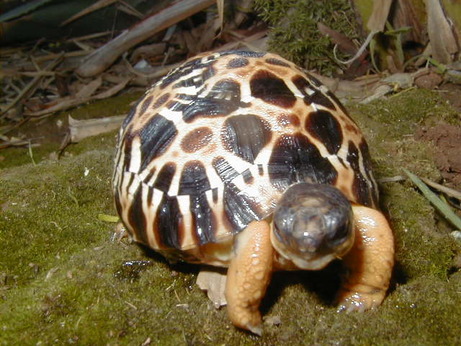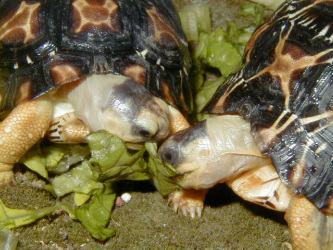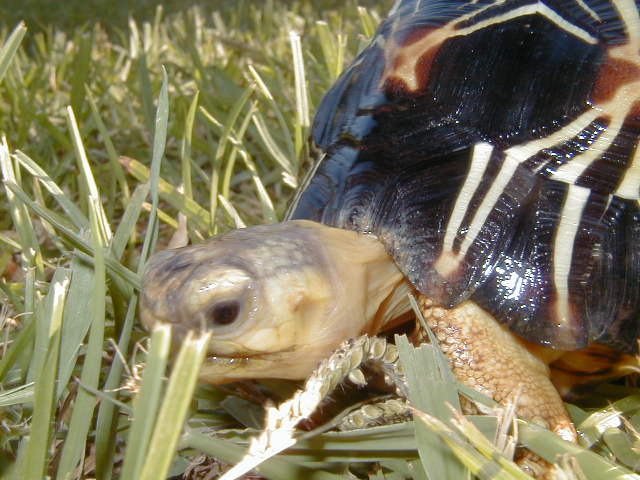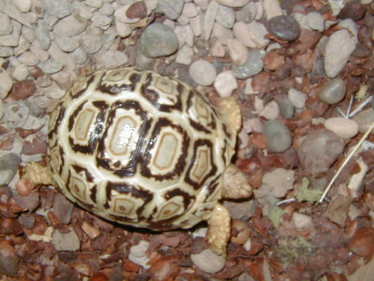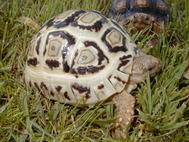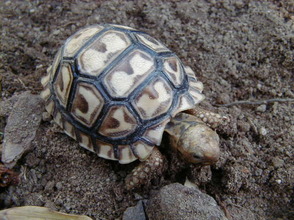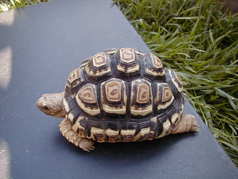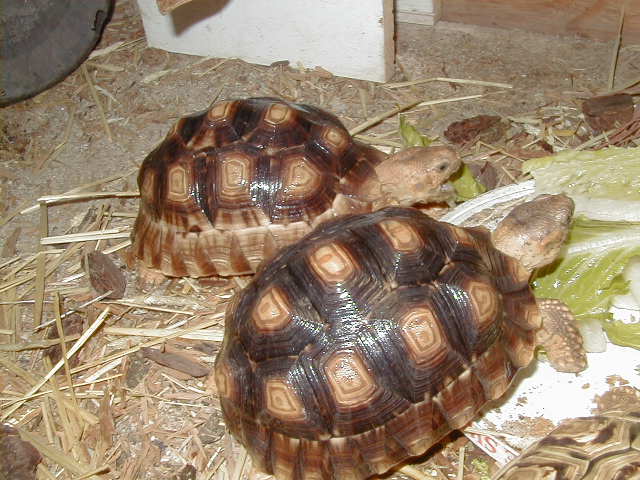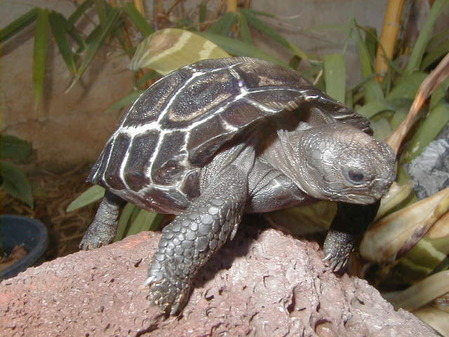
BABY GALAPAGOS @ THE COVE'
The giant tortoise we are all familiar with.. known as
the Galapagos is from the chain of islands in the Archipelago . The name itself 'Galapago' means tortoise in Spanish and may derive from the word for saddle, referring to the distinctive saddle-like shell of some of the tortoise species .
Galapagos giant tortoises can weigh up to 600lbs and live for more than 100 years. They were originally thought to belong to just one species, Geochelone elephantopus, although now have been classified into 14 different races or sub-species, three of which were believed to be extinct. Although the Galapagos giant tortoises are classified as just one species,
scientists cannot be sure whether the fourteen races they recognise actually belong to several different species. A current project to analyse their DNA should answer the question of how closely related the different races actually
are. Ten races of giant tortoises still exist in the wild, on the islands of Santiago which has about 800 surviving tortoises, Pinzon (300 tortoises), Santa Cruz (3000), San Cristobal (700), Española (120) and on Isabela Island, which
has a different race on each of its 5 volcanoes;- Cerro Azul with about 700 tortoises, Sierra Negra (500), Alcedo (5000), Darwin (1000) and lastly Wolf Volcano with 2000 tortoises. There are generally two recognized carapace shapes, from very large domes to smaller saddle-shaped shells, but will show evidence of all gradations in between. The different shapes probably evolved as an adaptation to the particular environment of each island. The large domed tortoises are found
mainly in the highlands where there is plenty of food to support their great size. In contrast, the saddleback races live on lower, more arid islands such as Española where food is more scarce and a smaller body is an advantage. The high
opening of their shell allows them to raise their neck higher to reach the sparse vegetation, further helped by their longer neck and legs.
The giant tortoise we are all familiar with.. known as
the Galapagos is from the chain of islands in the Archipelago . The name itself 'Galapago' means tortoise in Spanish and may derive from the word for saddle, referring to the distinctive saddle-like shell of some of the tortoise species .
Galapagos giant tortoises can weigh up to 600lbs and live for more than 100 years. They were originally thought to belong to just one species, Geochelone elephantopus, although now have been classified into 14 different races or sub-species, three of which were believed to be extinct. Although the Galapagos giant tortoises are classified as just one species,
scientists cannot be sure whether the fourteen races they recognise actually belong to several different species. A current project to analyse their DNA should answer the question of how closely related the different races actually
are. Ten races of giant tortoises still exist in the wild, on the islands of Santiago which has about 800 surviving tortoises, Pinzon (300 tortoises), Santa Cruz (3000), San Cristobal (700), Española (120) and on Isabela Island, which
has a different race on each of its 5 volcanoes;- Cerro Azul with about 700 tortoises, Sierra Negra (500), Alcedo (5000), Darwin (1000) and lastly Wolf Volcano with 2000 tortoises. There are generally two recognized carapace shapes, from very large domes to smaller saddle-shaped shells, but will show evidence of all gradations in between. The different shapes probably evolved as an adaptation to the particular environment of each island. The large domed tortoises are found
mainly in the highlands where there is plenty of food to support their great size. In contrast, the saddleback races live on lower, more arid islands such as Española where food is more scarce and a smaller body is an advantage. The high
opening of their shell allows them to raise their neck higher to reach the sparse vegetation, further helped by their longer neck and legs.

